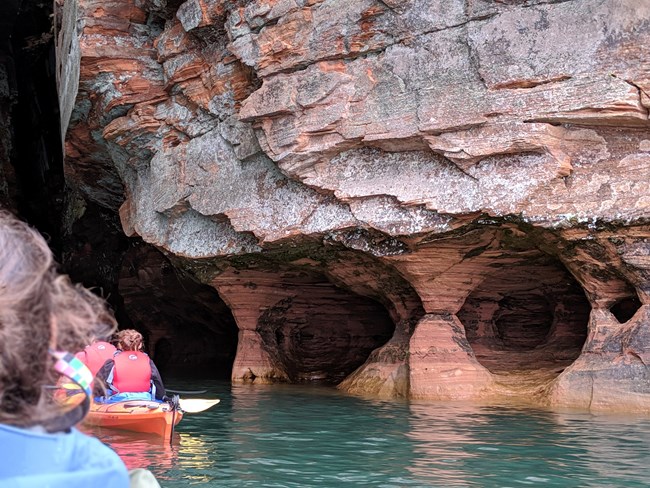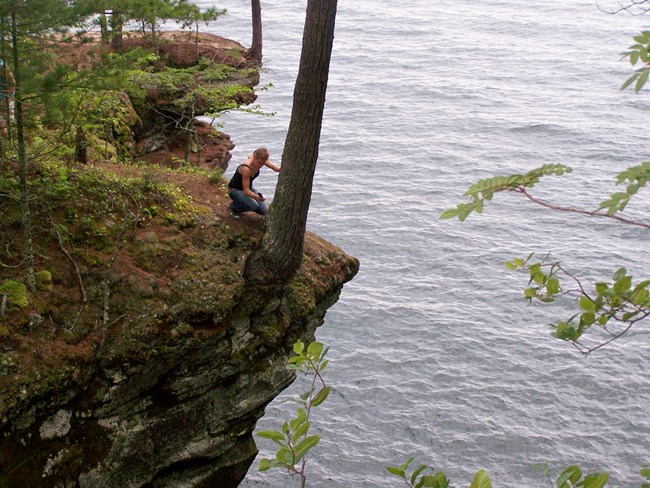
NPS Photo/M. Sweger Sea CavesCenturies of wave action, freezing, and thawing have sculpted shorelines throughout Apostle Islands National Lakeshore. Some of the Great Lakes' most spectacular scenery occurs where these forces interact with sandstone of the Devils Island Formation to create extensive sea caves. Nature has carved delicate arches, vaulted chambers, and honeycombed passageways into cliffs on the north shore of Devils Island, Swallow Point on Sand Island, and along the mainland near the Lakeshore's western boundary. People come to Apostle Islands National Lakeshore in summer and winter to visit the sea caves and witness Lake Superior's ever-changing handiwork. Ancient Sands, Devils, Apostles, and Sea CavesThe story of the Apostle Islands Sea Caves is an ancient one. After the volcanism and subsidence of the failed Keweenaw Rift, high-energy, braided streams carried sand and gravel from granitic highlands in what is now southern Minnesota to the basin where the Apostle Islands eventually formed. Sediments filled the basin for hundreds of millions of years, long before fossils, and are described as three formations making the Bayfield Group. The Devils Formation, named after the island, is about 300' thick and accumulated in wide-spread sand flats covered with shallow ponds, some only a few inches deep, connected by shallow channels. Sand deposited in this environment was thinly-bedded, fine-grained, contains ripple marks, and is situated between the Orienta and overlaying Chequamegon Formations. 
NPS photo Getting thereSummerThe sea caves are best seen by boat. Apostle Islands Cruise Service provides a variety of boat tours throughout the summer, which can include the Devils Island or mainland sea caves. Kayak outfitters in Bayfield guide day trips to the mainland caves and Sand Island throughout the summer. Kayakers with their own boats wishing to visit the mainland caves will find a good launch point at the end of Meyers Road. This is located about 18 miles west of Bayfield off Highway 13. Boaters wishing to visit the Sand Island caves will find a boat launch at Little Sand Bay, 13 miles north of Bayfield. WinterAccess to the mainland ice caves is from Meyers Beach. Every winter, the frozen surface of Lake Superior from Saxine Creek to Lunch Beach is closed to the public unless the Superintendent has declared the ice caves open. Please check the current conditions or the park's Facebook page for status of the ice caves before visiting. A Safe VisitVisitors to the caves face a number of potential hazards. Boaters should avoid sea caves when conditions are rough. Get the marine weather forecast before leaving on your trip. Personal flotation devices (PFDs) should be worn. Kayakers should not visit the caves alone. When walking along cliff tops remember that this is an eroding shoreline, and stay back from the edge. Winter visitors need to be especially careful:
If planning a winter trip to the caves, call the automated Apostle Islands Ice Line at (715)779-3398, extension 3, for current ice conditions at the mainland caves, or check the current conditions or the park's Facebook page for status of the ice caves before visiting. The Changing Face of Cliffs 
Left image
Right image
|
Last updated: November 14, 2024
